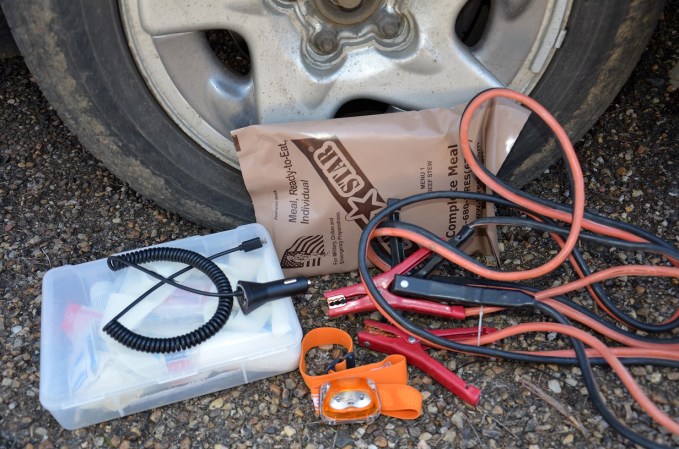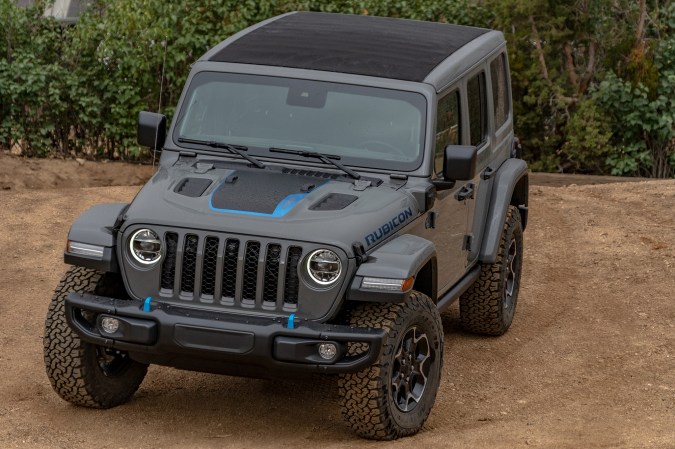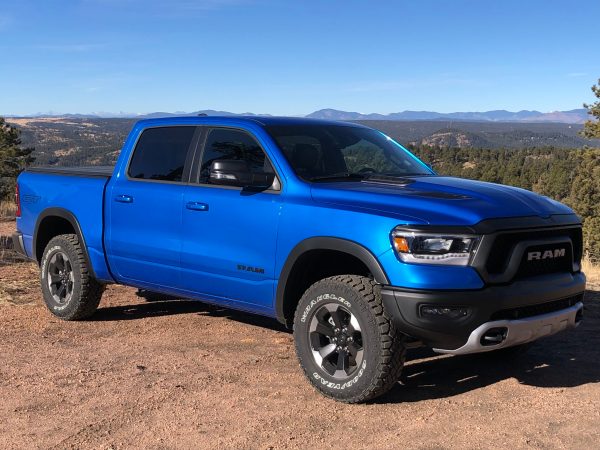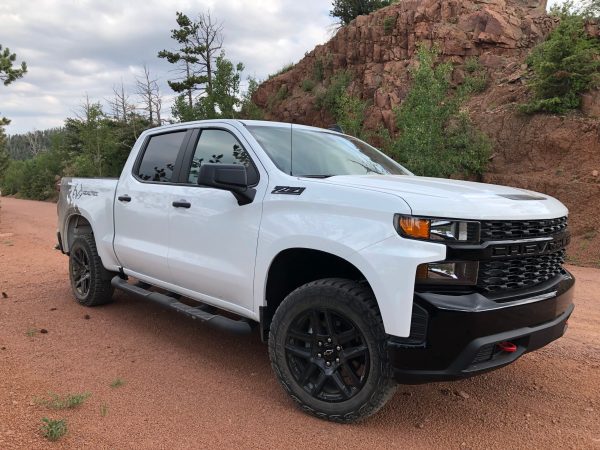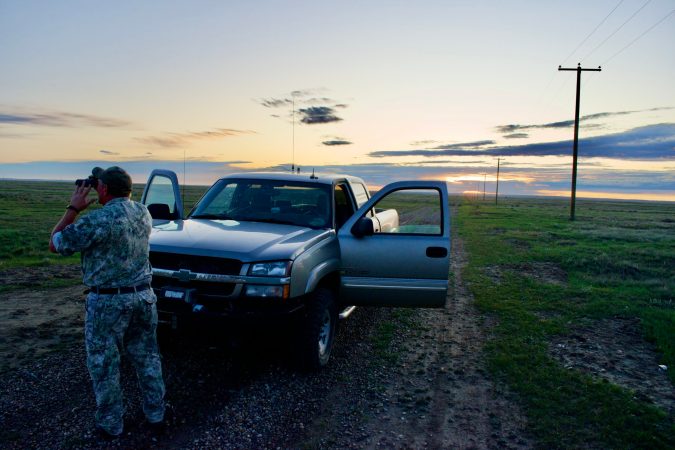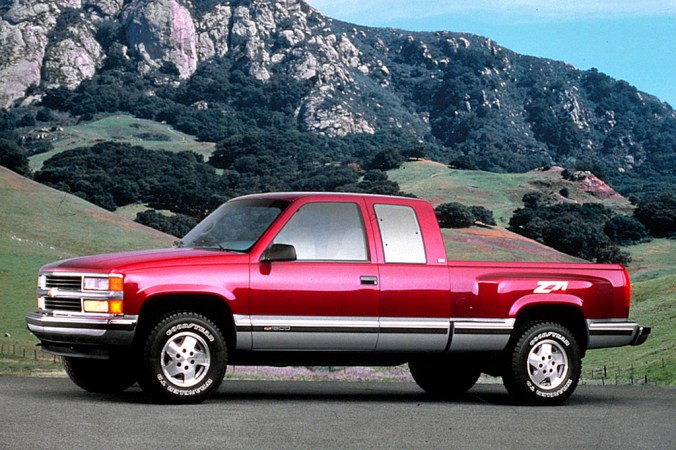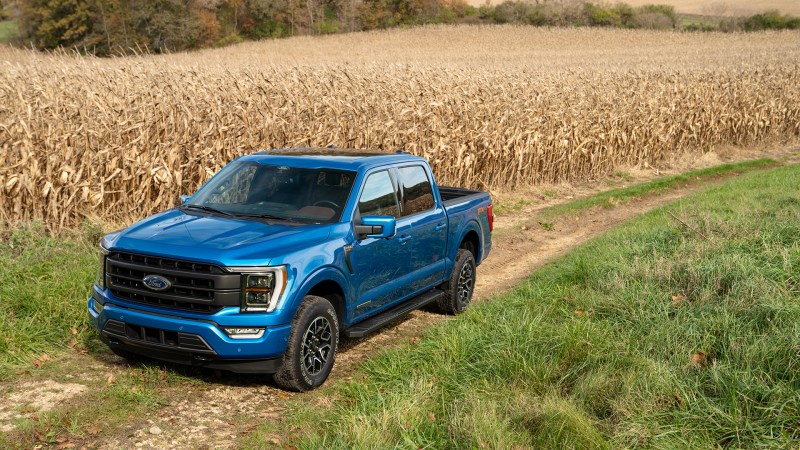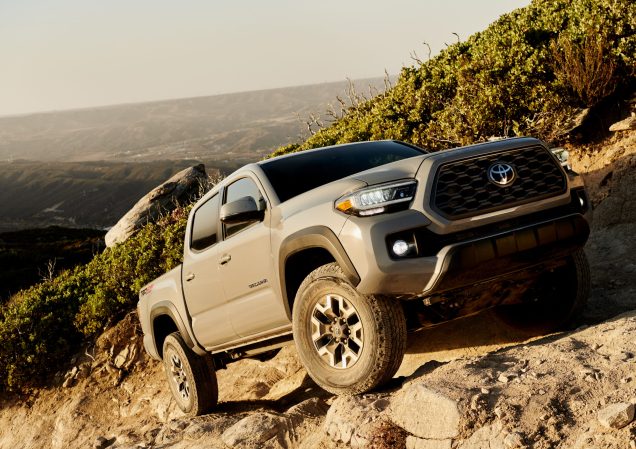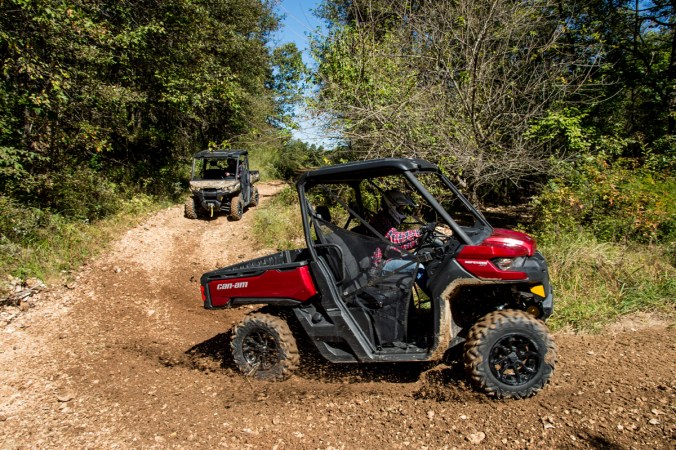We may earn revenue from the products available on this page and participate in affiliate programs. Learn More ›
Most hunters think they know what they need in a new truck: a full-size pickup with four-wheel drive, crew cab, and a bed big enough for all the gear. It has to have a top-end towing package, a payload rating high enough to carry all your buddies, plus their gear too. But many truck models come with different engines with different capabilities. How do you decide which one is best for your needs? Most will select whichever engine puts out the most horsepower, because we all think bigger is better. That’s not always the case when it comes to the way hunters need their trucks to perform. We ask a lot of our trucks, but its ability to go from zero to 60 isn’t as important as pulling a 30-foot trailer down a boggy backroad. And that’s why torque, the amount of working force your engine can generate, should matter more to most hunters than horsepower does.
The two measurements—torque and horsepower—do serve as indicators of a vehicle’s capabilities, but they are quite different from one another. Horsepower, which measures how fast an engine can move your vehicle, gets all the headlines, but torque gets the actual work done. So, let’s take a look at the differences between horsepower and torque and why it matters before you decide to buy your next hunting truck.
Powertrain Essentials
Before understanding the differences between horsepower and torque, it pays to understand what your truck’s powertrain is and why it matters. Put simply, the powertrain includes a vehicle’s engine and drivetrain (transmission, driveshaft, differential, axle, CV joints, and any other parts that help deliver engine energy to the wheels). Both horsepower and torque originate in the engine, and the drivetrain delivers all that capability to the wheels so that your truck moves.
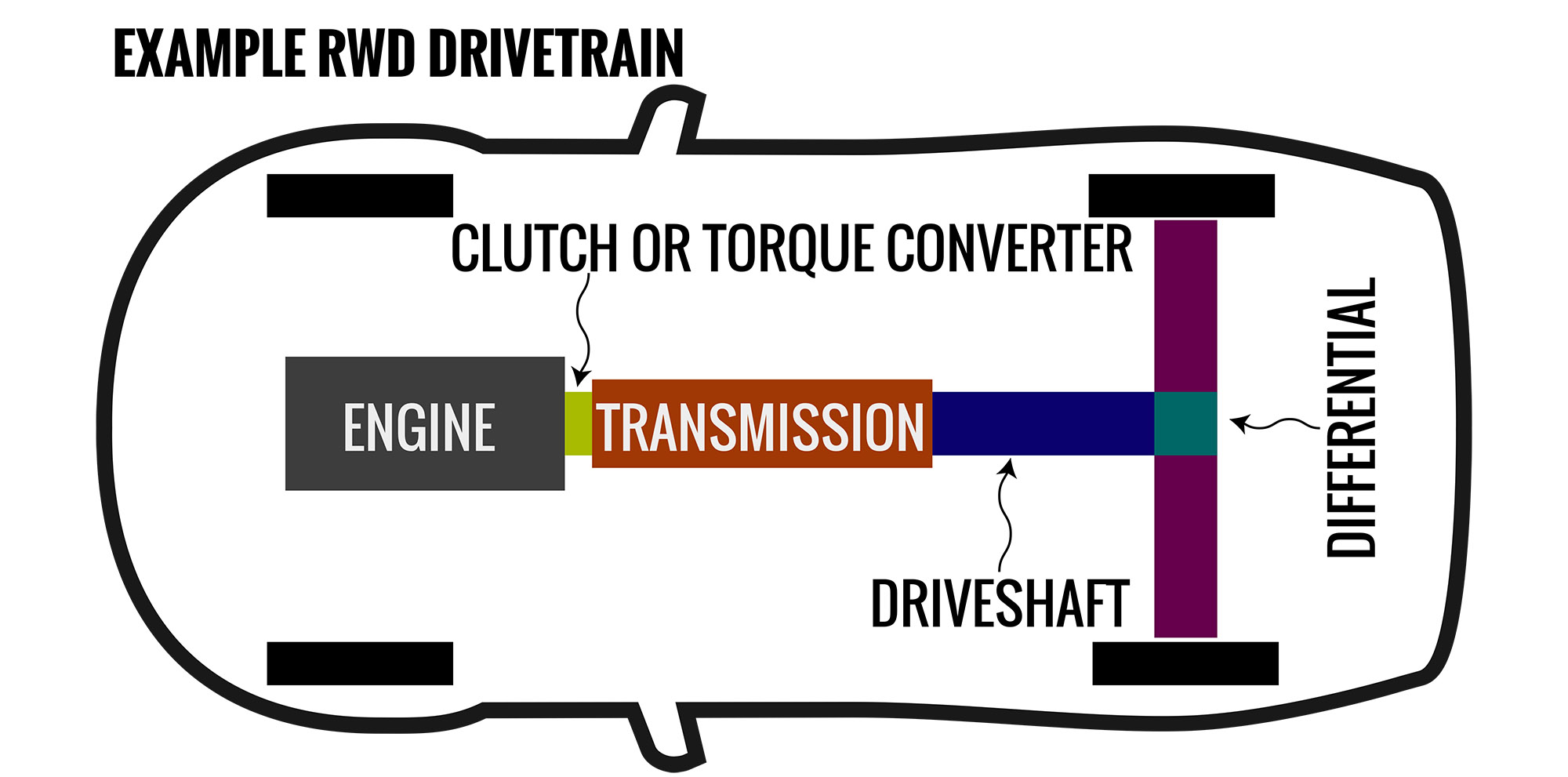
If you’re not sure how energy travels from the engine to the wheels, here’s how it works: When you step on the gas pedal, your engine generates energy, pushing the pistons inside the cylinders up and down with increasing speed as you give the vehicle more gas. The pistons transfer that energy to the crankshaft which translates the piston’s reciprocating (up and down) energy into rotational energy. This rotational energy is then transferred to the transmission via the clutch or torque converter, depending on the transmission. The transmission and the rest of the drivetrain then use various gears and shafts to deliver that energy to the vehicle’s drive wheels, providing horsepower and torque to the tires.
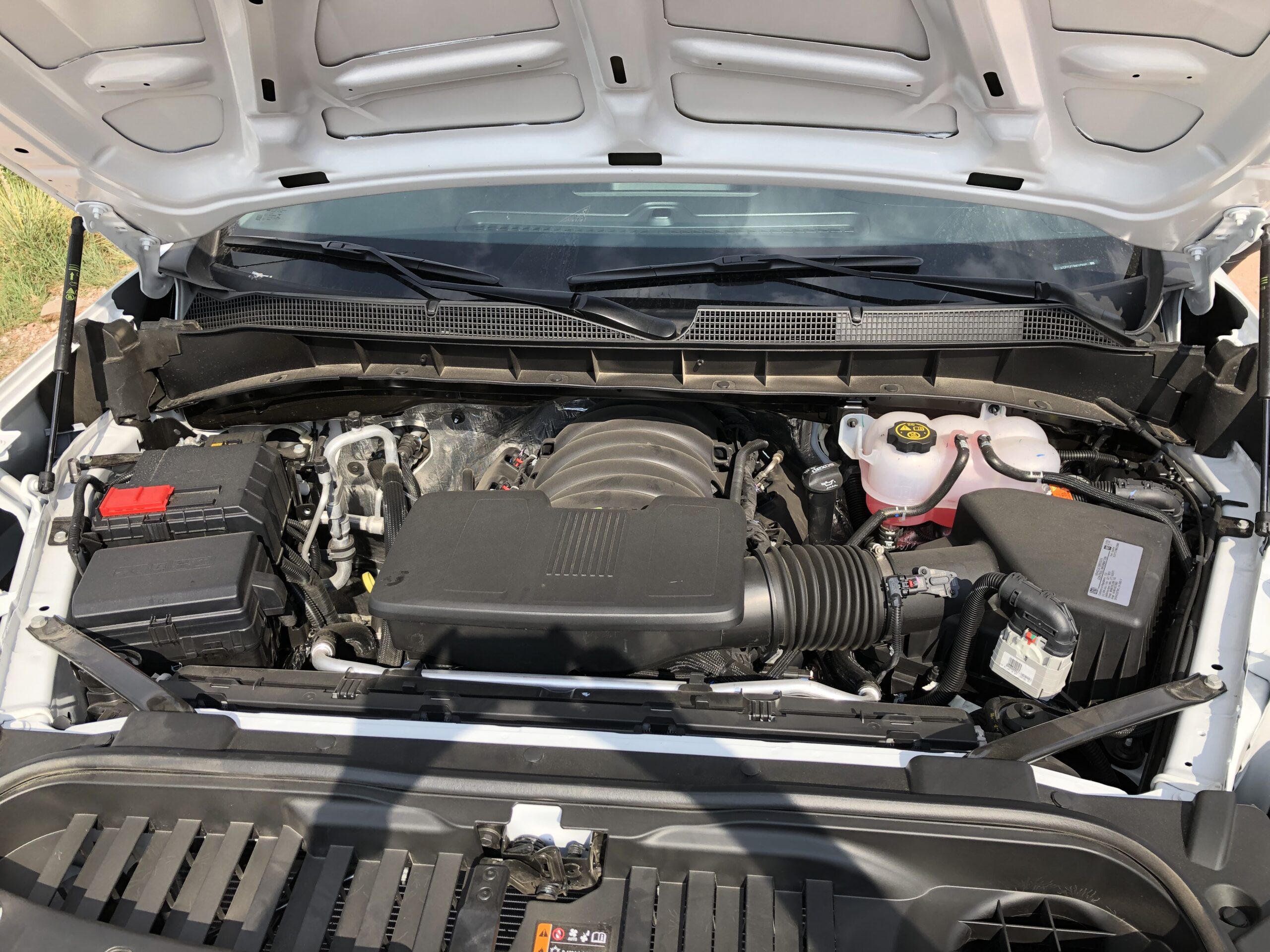
What Is Horsepower?
Horsepower. Ponies. You hear automotive journalists, salesmen, and car gurus throw these terms around quite a bit, and the awed tones they use imply a sense that all those horses under the hood amount to a high-performance automobile. The reality, however, is slightly different.
In layman’s terms, horsepower is a measure of how quickly an engine can move weight from Point A to Point B. (In case you slept through high school physics, one horsepower can accomplish 33,000 foot-pounds (ft-lbs.) of work per minute. A ft-lb. is the amount of energy needed to lift one pound one full foot off the ground.) Horsepower measures the speed of work and, in an automotive context, is found by multiplying torque by RPM. Since moving a vehicle that weighs thousands of pounds takes plenty of work, it’s easy to see why automakers love to advertise horsepower, especially when it comes to sports cars. All else being equal, an engine that generates 300-horsepower will get a car up to speed on the highway faster than an identical vehicle with a 200-hp engine.
Automakers are in business to make money, and in America, more horsepower translates to more speed (usually) and more money. As such, manufacturers have every reason to advertise higher horsepower numbers for their vehicles, but they have to be careful to avoid running afoul of false advertising. To do so, companies generate a horsepower rating by measuring max horsepower output at the crankshaft, avoiding power-reducing friction from the drivetrain, and this rating is the number advertised. This means that just because an engine is rated to generate 350-horsepower does not mean that it actually will produce 350 at the wheels. In fact, an engine’s horsepower rating will always be higher than its real-world horsepower (power influenced by factors such as friction, drivetrain efficiency, and the weight of a given vehicle, which will fluctuate the more gear you saddle your truck with).
Just as important as the difference between horsepower ratings and real-world horsepower is an engine’s RPM. No matter how much power an engine can produce, it can only achieve that maximum output while operating at a specific RPM. For example, the Toyota Tundra’s 5.7-liter i-Force V8 engine is rated to produce 381-horsepower at 5,600 RPM. When the Toyota engine is running at 3,500 RPM, it cannot achieve that 381-horsepower mark, even without delivering power to the drivetrain. Unlike Toyota, most manufacturers love printing maximum horsepower numbers in massively bold print but then conveniently forget to list what RPM level an engine needs to reach its max output which can make finding this information difficult. If your desired vehicle’s manufacturer does not list your engine’s max output RPM or if you have an older vehicle, you may need to consult a third party to find the motor’s factory horsepower and RPM ratings (more on that later).
You may be getting the feeling that focusing on horsepower isn’t as critical as automakers would have you believe. Power does matter, but you should start taking a closer look at torque and what it can do for you on the highway and in the backcountry. So, let’s do that.

Engine Torque Equals Work
Torque is related to horsepower, but it is also an entirely different beast. Torque grabs way fewer headlines, but automakers still have plenty of reasons to care about torque numbers. Shop around for a new truck, and you will notice that torque numbers get second billing only to horsepower, and it gets all the bold numbers (and the smoke and mirrors) that goes along with engine power ratings. Like horsepower, torque measurements directly relate to work, but unlike horsepower, torque measures “grunt” instead of “go.”
To understand torque, think of a wrench with one end positioned at a pivot point, such as a bolt. The other end receives however many pounds of pressure you apply to it. The bolt then receives that force, which is torque. Scientifically, torque equals the force you apply (pounds) by the distance between a pivot point (your bolt) and the location where the wrench receives pressure. The resulting force applied to the bolt, measured in pound-feet (lb.-ft.), is the wrench’s torque. (Pound-feet should not be confused with foot-pounds. The former signifies output while the latter signifies input.) Time disappears entirely from this equation. In an automotive context, torque measures how much rotational force an engine can deliver to the transmission. Since torque is a force, you cannot see it, but you can feel its effects. You know that feeling of being shoved back into your seat when you stomp on the accelerator? That’s torque in action.
Like horsepower, official engine torque ratings can be a bit different from the real-world reality and in the same ways. Advertised torque ratings communicate an engine’s maximum torque output at the crankshaft, which means torque at the wheel tends to be lower than the numbers listed by the manufacturer.
Also, like maximum horsepower, peak torque can only be achieved at optimum RPMs, but unlike peak power, max torque tends to appear at mid-to-low RPM ranges, depending on the vehicle. Diesel engines tend to produce good low-end torque which often translates to better off-road and towing capabilities, such as getting a trailer rolling from a standstill. Of course, gasoline-powered vehicles can also produce gritty low-end torque when set up to do so.
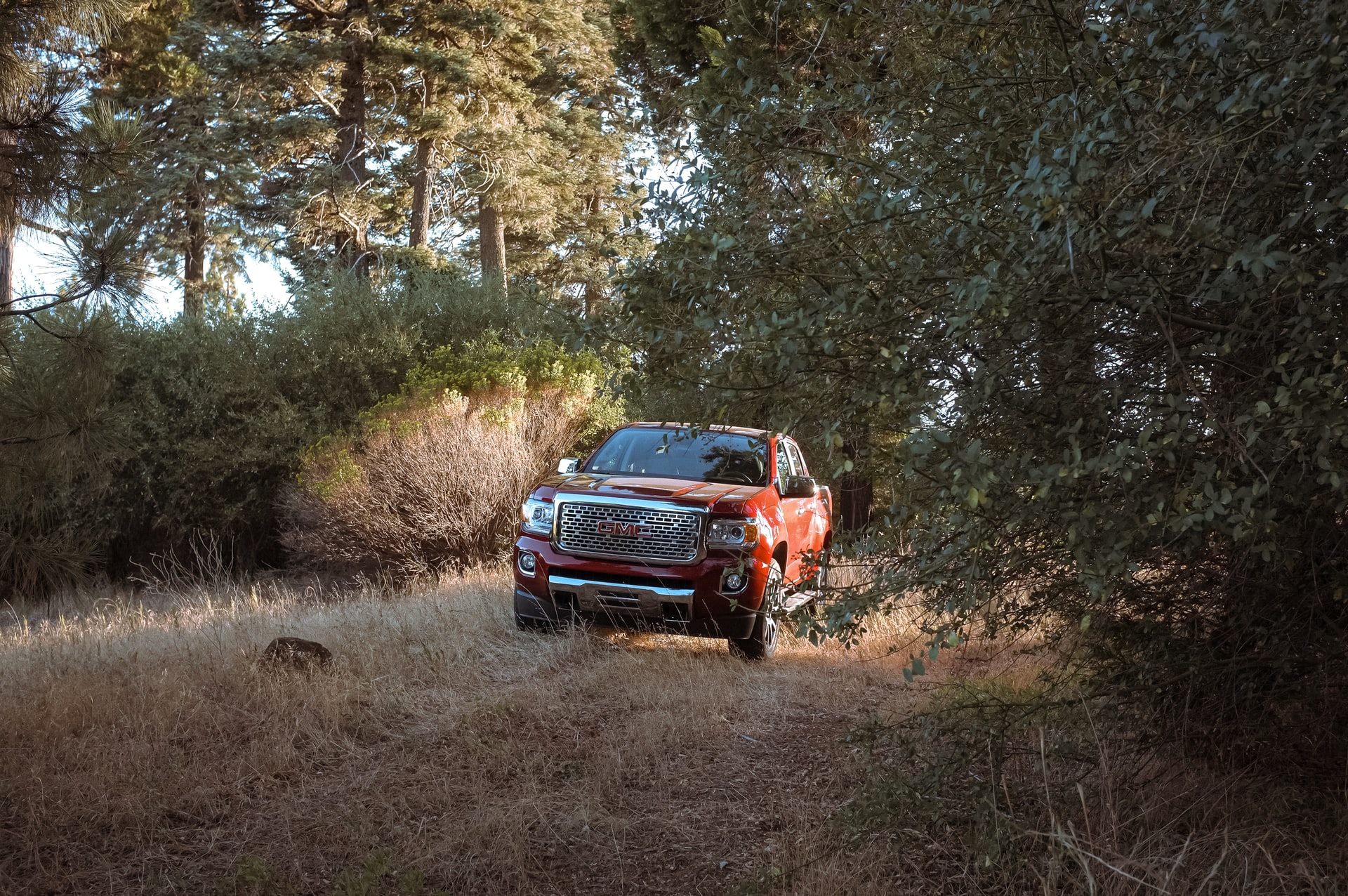
Which Matters More: Horsepower or Torque?
When hauling cargo, towing a trailer, or plowing through mud or snow, torque matters much more than horsepower. Reaching peak power takes time, but max torque appears every single time an engine achieves the proper RPM. It will not disappear until RPM levels change, resulting in almost instantaneous force whenever you need it, wherever you need it, and for however long you need it.
Most hunters want a vehicle capable of towing or plowing over (or through) rough terrain, and the best powertrains for these jobs specialize in producing low-end torque (peak torque output at lower RPMs). These powertrains deliver maximum torque almost as soon as you begin to step on the gas. In real-world practicality, this means getting a 5,000-pound trailer started more easily from a standstill or powering through a snowbank with greater control and lower speeds.
As important as both power and torque may be, look for a well-equipped truck that will get the job done. If you plan to haul heavy trailers often and your preferred truck has two engine options, opt for the motor with the higher torque rating, but also make sure to look for all the extra goodies, such as a towing package and the right Gross Vehicle Wight Rating (GVWR). If you’re looking for a truck that needs to go off-road, a smaller engine may be the better choice so long as you match it with the proper off-road upgrades.
Read Next: How to Build the Ultimate Hunting Truck

Shopping for Horsepower and Torque
The biggest challenge when it comes to finding the ideal combination of horsepower and torque for your vehicle is determining how you plan to use that powertrain. Generally, higher horsepower ratings come with higher torque ratings, although on occasion, a diesel motor with a less-than-stellar power rating can deliver a surprising amount of torque. In either situation, the key to making a proper engine choice is determined by your vehicle’s intended purpose.
Due to the torque demands of towing trailers and venturing off-pavement, an engine with plenty of low-end torque is just what the doctor ordered. Usually, the best power plants for these jobs include diesels and long-stroke gas engines. Both motors provide maximum torque at lower RPMs with diesels usually enjoying a small advantage over gas-powered competitors. Thankfully, most full-size trucks include options for a diesel, long-stroke gas motor, or both, making them a logical, popular choice for outdoorsmen.
Unless you regularly comb the internet for the latest reviews of the newest rides, the best place to find torque and horsepower ratings is on the manufacturer’s website. That said, optimum RPMs for those ratings tends to be absent, and you’ll have to do a little more digging to find that data. (Toyota spoils the curve by posting optimum RPM levels alongside its iForce V8 ratings.) Unfortunately, finding (factory) power and torque ratings for used vehicles can be even more challenging.
I have yet to discover a single manufacturer who posts the specs of old truck models, but thankfully, there are other sources that do. One of my favorite suppliers of historic automotive data is Edmunds. The company’s Car Reviews page allows you to search for virtually any make and model vehicle back to about 1990. Upon visiting the vehicle’s review page, navigate to the top right corner and click “Features” or scroll down the page until you see the “Specs & Features” link. Click the link, and you will discover a treasure trove of valuable information for your chosen vehicle, including horsepower and torque ratings with optimum RPM level for each. I also recently discovered a similar service offered by CarGurus that seems a bit more user-friendly. Simply find your vehicle of choice, then click the “Trims and Specs” link in the bar at the top of the review page.
A little bit of legwork can go a long way toward finding the truck (and trim) that fits your needs. Don’t just settle on a vehicle because it has a high horsepower rating. If you do, it’s possible that you will overspend on a truck that underperforms.

